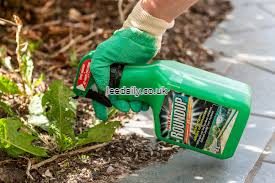Introduction to Herbicides
Herbicides, also known as weed killers, are chemical substances used to kill or control unwanted plants (weeds) in gardens, lawns, and agricultural fields. They come in various forms such as sprays, granules, and liquids for nutrients and space. A well-tended garden is a source of pride, but pesky weeds can quickly turn that joy into frustration. Enter weed killers—your ultimate ally in the fight against unwanted foliage. Understanding how to choose the right herbicide makes all the difference between a flourishing landscape and one overrun by invasive species.
Read more Weed Killer 101: Choosing the Right Herbicide for Your Garden
With so many options available, it’s crucial to know what types exist and which best suit your gardening needs. Whether you’re dealing with stubborn dandelions or relentless crabgrass, there’s a weed killer out there tailored just for you. Let’s dive into this world of herbicides together, uncovering essential tips on selection, application techniques, safety measures—and more—in your quest for a weed-free haven!
Types of Weed Killers
Weed killers come in various forms, each designed to tackle different types of unwanted plants. Pre-emergent herbicides are applied before weeds germinate. They create a barrier that prevents seeds from sprouting.
Post-emergent herbicides work on established weeds. These products target the leaves and stems, delivering active ingredients directly to the plant’s system.
Selective herbicides focus on specific weed species while leaving desirable plants unharmed. This is perfect for gardens where you want to protect flowers or vegetables.
Non-selective herbicides eliminate all vegetation they contact, making them effective for clearing entire areas but risky near desirable growth.
Natural options exist too. Organic herbicides often use vinegar or essential oils as active ingredients and can be safer for pets and children.
Understanding these types helps gardeners choose the right solution tailored to their specific needs.
Factors to Consider When Choosing a Herbicide
When selecting a herbicide, several factors come into play. First, identify the type of weeds you’re dealing with. Different herbicides target specific species. Knowing your enemy is half the battle.
Next, consider the environment in which you’ll apply the product. Some herbicides work better in certain climates or soil types.
Think about whether you need a selective or non-selective formula. Selective weed killers focus on specific plants while leaving others unharmed—ideal for gardens filled with delicate flowers.
Pay attention to application methods as well; liquids spray differently than granules and can impact how effectively they reach their targets.
Always check if any pets or nearby wildlife may be affected by your choice. Safety should never take a backseat when maintaining your garden’s beauty and health.
Popular Brands and Their Effectiveness
When it comes to weed killers, several brands stand out for their effectiveness and reliability. Roundup is often a go-to choice due to its potent glyphosate formula. It targets stubborn weeds quickly, making it popular among gardeners.
Another noteworthy option is Ortho GroundClear. This herbicide provides fast results and offers long-lasting protection against new growth. Users appreciate its versatility in various outdoor settings.
For those seeking an organic alternative, EcoSMART offers plant-based solutions that are safer for pets and children while still being effective against common garden nuisances.
Each brand has its unique formulation tailored for specific types of weeds or environments. Understanding these differences can help you choose the right product based on your gardening needs and preferences.
Application Techniques for Different Types of Weeds
When tackling different types of weeds, the application technique can make all the difference. For annual weeds like crabgrass, a pre-emergent herbicide is ideal. Apply it early in the season to prevent seeds from sprouting.
Perennial weeds such as dandelions require targeted treatment. Use a spot application method for these persistent offenders. A glyphosate-based product works well here; just be cautious around desirable plants.
For large infestations, consider using a broadcast spray technique with a selective herbicide that won’t harm surrounding flora. Ensure even coverage for best results.
Timing also plays a crucial role. Apply during calm weather to avoid drift and when weeds are actively growing for maximum absorption of the herbicide into their systems. Each weed type demands its own strategy—know your enemy before launching an attack!
Safety Precautions and Environmental Impact
When using weed killer, safety should always come first. Always wear protective clothing such as gloves, masks, and goggles to shield yourself from harmful chemicals. It’s essential to read labels carefully for specific instructions on how to apply the product safely.
Consider applying herbicides on calm days. Wind can carry chemicals away from your intended target, potentially harming nearby plants or wildlife.
The environmental impact of herbicides is another critical factor. Many chemical weed killers can seep into soil and waterways, affecting ecosystems far beyond your garden. Look for organic options that minimize harm while still controlling stubborn weeds.
Always follow local regulations regarding pesticide use; some areas have restrictions in place to protect pollinators and other beneficial organisms. Being mindful about application times and methods will go a long way in preserving the environment while maintaining a healthy garden space.
Conclusion
Your garden is a haven, and protecting it from pesky weeds is essential. Choosing the right weed killer can make all the difference in maintaining its beauty and health. Remember, not all herbicides are created equal; understanding their types and knowing how to apply them effectively will lead you toward success.
Safety should always be at the forefront of your mind when selecting any chemical product for gardening. Read labels carefully, follow application guidelines precisely, and consider organic options if you’re concerned about environmental impact.
With so many brands on the market today, researching effectiveness reviews may help narrow your choices. Investing time into learning about weed killers will pay off by keeping your garden thriving year-round.
Happy gardening!
